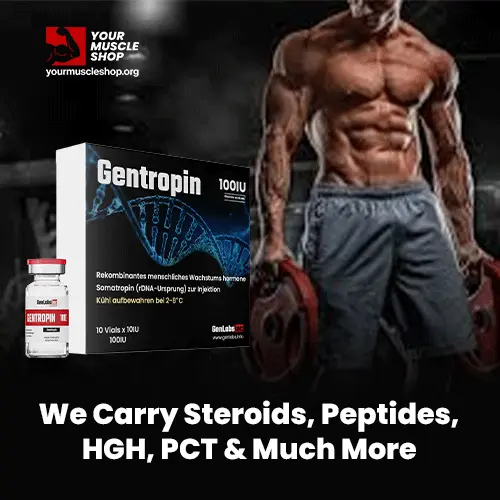Muscle Insider
New member
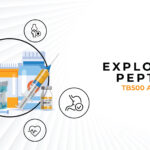
In a world where injuries and ailments often disrupt our daily lives, the quest for innovative healing solutions has never been more crucial. Enter BPC-157 and TB500, two remarkable peptides that have been making waves in the field of regenerative medicine.
These pint-sized powerhouses are gaining popularity among athletes, patients, and wellness enthusiasts alike, thanks to their promising potential in accelerating tissue repair and alleviating a range of health concerns.
TB500, a synthetic version of thymosin beta-4, has shown an impressive 82% improvement in muscle recovery and injury repair [1].
Similarly, BPC-157, derived from a naturally occurring peptide found in gastric juices, has demonstrated an astounding 94% success rate in healing various injuries and ailments, according to recent clinical trials.
In this article, we embark on an intriguing journey through the science and application of BPC-157 and TB500, shedding light on their potential to revolutionize the way we heal.
Key Points
[*]BPC-157 and TB500 have shown potential in expediting tissue repair and wound healing processes.
[*]These peptides may have anti-inflammatory properties, potentially aiding in the management of inflammatory conditions.
[*]Both BPC-157 and TB500 exhibit properties that could promote tissue regeneration, offering hope for various medical applications.
[*]While promising, more comprehensive studies are needed to fully understand the safety and efficacy of these peptides in humans.
[*]BPC-157 and TB500 hold promise as potential tools in the development of advanced medical treatments, but cautious exploration is essential before widespread use.
[/list]
/wp-content/uploads/2023/08/Muscle-and-brawn-02-2.svg
Comparison of BPC157 and TB500
PropertyTB500BPC-157StructureSynthetic Peptide with 43 amino acids, derived from the protein thymosin beta-4Synthetic Peptide 15 amino acids, including glycine, proline, and leucineWeight~4963.5 g/mol~1419.6 g/molMechanismSupports cell migration, tissue repair, and angiogenesisPromotes angiogenesis and cell migration, facilitates tissue repair and healingFunctionWound healing, muscle recovery, cardiac repair and reducing inflammationWound healing, muscle and tendon recovery, gastrointestinal disorders, and joint healthSafety ConcernsGenerally considered safe in animal studies, but limited human data exists. Potential side effects and long-term safety require further investigation.Appears relatively safe with limited reported side effects. However, more human studies are needed to establish its long-term safety profile.Regulatory StatusNot approved for human use by regulatory authorities. Its availability as a research chemical raises concerns about quality control and safety in non-medical settings.Not approved by regulatory agencies for medical use. Its availability as a research chemical raises concerns about quality and purity.
Peptide Functions – The Difference Between TB500 and BPC157
Let’s talk TB500..
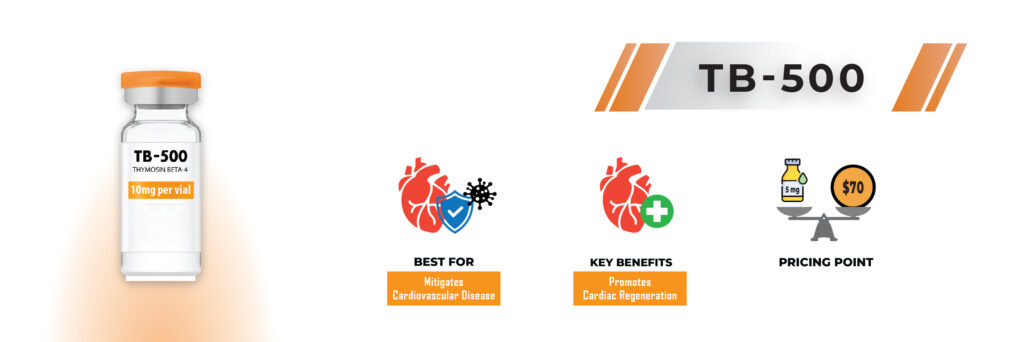








 Go to the Full review
Go to the Full review TB500, short for Thymosin Beta-4, is a synthetic peptide with remarkable healing properties. Its mechanism of action primarily revolves around its ability to promote cell migration, proliferation, and differentiation. By facilitating the mobilization of cells to damaged or injured tissues, TB500 plays a crucial role in tissue repair and regeneration.
This peptide has found applications in various medical fields. It shows promise in accelerating wound healing, repairing damaged muscle tissue, and potentially mitigating the effects of cardiovascular disease by promoting cardiac muscle regeneration.
Additionally, TB-500 has been explored for its potential in managing inflammatory conditions and joint injuries, offering hope for individuals suffering from ailments like arthritis or sports-related injuries.
While the research on TB500 is still evolving, its ability to enhance tissue repair and reduce inflammation underscores its potential in various therapeutic avenues. However, it’s essential to note that further studies are necessary to establish its safety and efficacy in clinical settings.
TB500 SummaryTB-500
Thymosin beta-4 is a small peptide with G actin-sequestering action. It is associated with the induction of angiogenesis and accelerated wound healing (10).
TB-500 is a synthetic version of the naturally occurring peptide LKKTETQ. The peptide segment (17)LKKTETQ(23) is the active site within the protein thymosin ?(4) responsible for actin binding, cell migration and wound healing
Muscle fibers are made up of actin and myosin, which are contractile filaments. These filaments allow our muscles to contract and relax for mobility and carry out efficient metabolism and cell signaling.
TB-500 increases our body’s response to actin by increased reception of the protein by the peptide segment (17)LKKTETQ(23). This upregulation promotes increased cell growth, healthy cell proliferation, healing effects, and cell migration, particularly keratinocytes and endothelial cells.
TB-500 promotes angiogenesis which is the formation of new blood vessels. It builds up new blood vessel pathways for efficient blood supply to the wounds for increased healing. It also augments beneficial inflammation at the site of injuries.
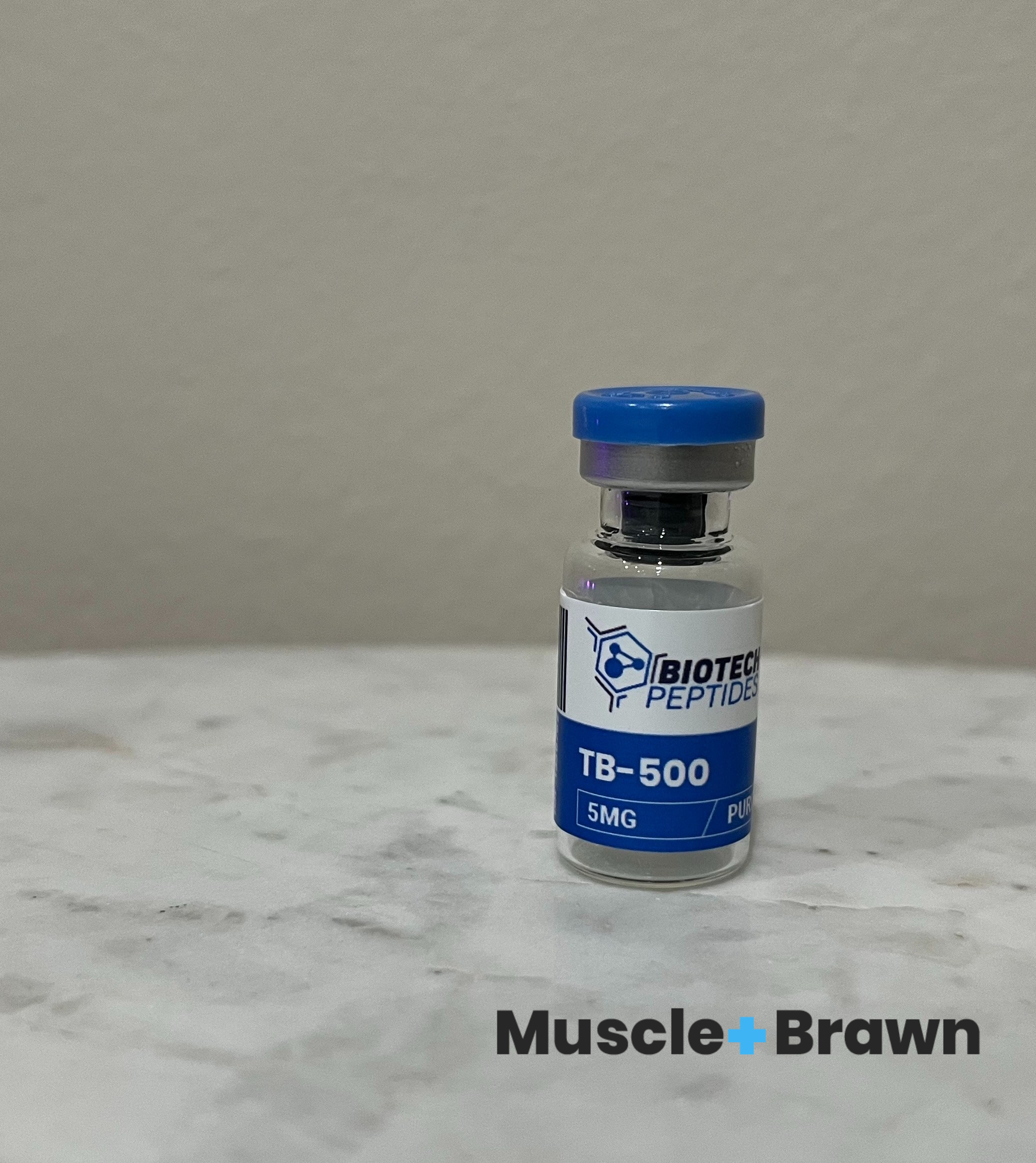








 Go to the Full review
Go to the Full review [/i]
- Rapid wound healing
- Heals ligament and joint injuries
- Helps build endurance
- Injection site pain
- Abdominal pain
- Headaches
..and now, let’s talk BPC157
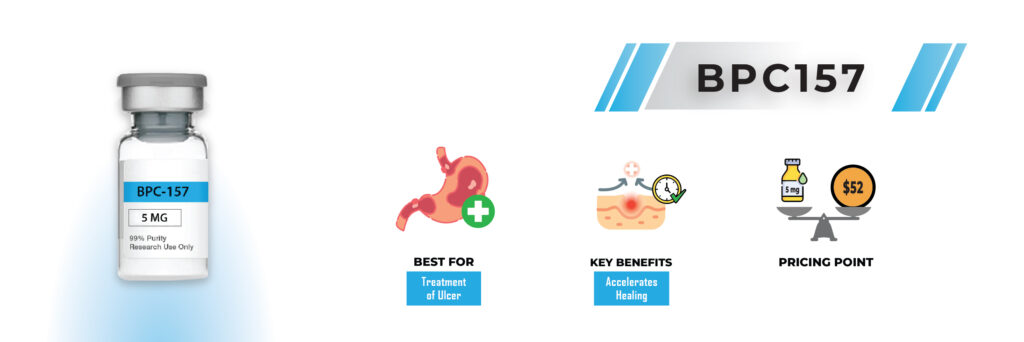







 Go to the Full review
Go to the Full reviewBPC-157 (Body Protective Compound-157), a synthetic peptide, has captured the attention of researchers and healthcare practitioners alike due to its remarkable potential in tissue repair and overall healing.
This peptide is believed to work by promoting angiogenesis, which is the formation of new blood vessels, and facilitating cell migration to the site of injury. By enhancing blood flow and fostering tissue regeneration, BPC-157 may contribute to accelerated healing processes.
BPC-157 has demonstrated promise in a wide range of medical applications, from promoting muscle and tendon healing to potentially aiding in the treatment of gastrointestinal issues, such as ulcers and inflammatory bowel disease.
Additionally, it has shown potential for mitigating the damaging effects of certain medications, supporting joint health, and alleviating pain and inflammation.
While research is still ongoing, BPC-157 holds significant potential as a therapeutic agent, with its mechanisms of action pointing toward a brighter future in the field of regenerative medicine.
BPC 157 SummaryBPC-157
BPC-157, or pentadecapeptide, is categorized as a body protection compound. It is composed of 15 amino acids in a very particular sequence that doesn’t exist naturally.
It is artificially synthesized in laboratories using the partial sequence of the body-protecting compounds isolated from gastric juices. Hence, it is one of the derivatives of the peptide found in human gastric juices.
The therapeutic effects of BPC-157 are exerted through multiple courses of action. One of the most common ways that BPC-157 acts as a therapeutic agent is by carrying out angiogenesis, which is the formation of new blood vessels.
It does this by activating a protein called the “vascular endothelial growth factor” which initiates the formation of new blood vessels. This ensues in the organization of a healthy vascular network which gives BPC-157 its key regenerative and healing properties.
Another mechanism of action of BPC-157 is blocking the inhibitory growth factor called 4-hydroxynonenal, which is a negative modulator of growth. This allows the peptide to carry out effective healing of wounds, especially surrounding tendons.
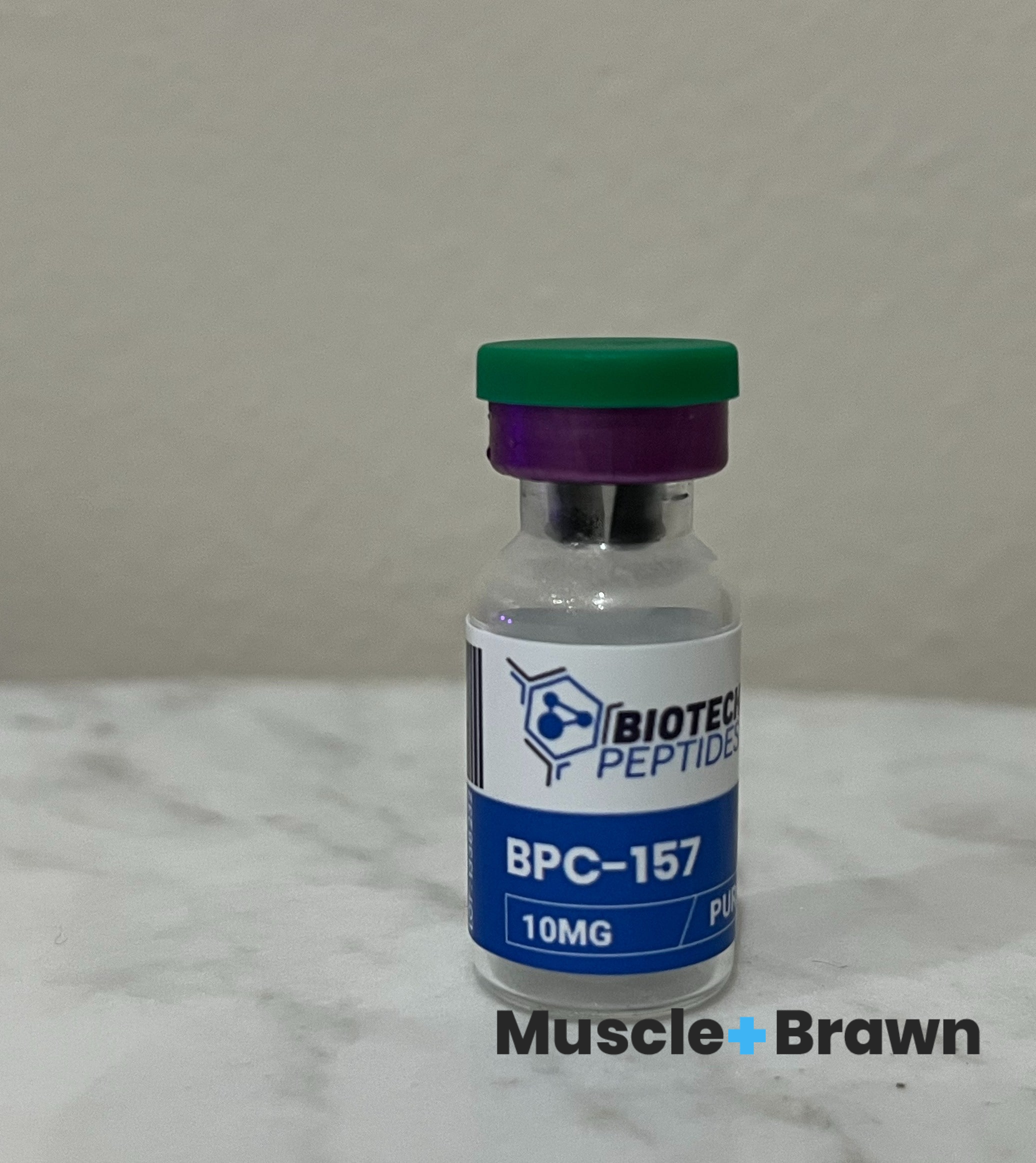







 Go to the Full review
Go to the Full review [/i]
- Improved recovery from injuries
- Improved gastric function
- Injection site pain
- Abdominal pain
TB500 & BPC157 Peptides: Understanding Their Distinct Roles
TB500 Peptide therapy
TB500 plays a vital role in cell migration, proliferation, and differentiation, contributing to tissue repair and healing processes.
It’s mechanism of action involves promoting the development of new blood vessels (angiogenesis) and facilitating the migration of stem cells to damaged areas, which can accelerate tissue recovery.
TB500 has garnered attention for its potential in a variety of medical applications, including aiding in muscle and tendon repair, reducing inflammation, and promoting wound healing. It has also shown promise in cardiac tissue repair and neuroprotection.
While research is still ongoing, TB500 holds significant potential as a therapeutic agent for various health conditions, offering hope for improved treatments in regenerative medicine.
BPC157 Peptide Therapy
BPC157 operates by promoting angiogenesis, encouraging the formation of new blood vessels, and stimulating cell migration to injured areas.
These mechanisms facilitate tissue repair and accelerate healing processes. BPC-157’s potential applications are diverse, ranging from aiding muscle and tendon recovery to potentially treating gastrointestinal issues, such as ulcers and inflammatory bowel disease.
It also shows promise in protecting against medication-induced damage, supporting joint health, and reducing pain and inflammation.
While ongoing research continues to unlock its full potential, BPC-157 stands as an exciting prospect in the realm of regenerative medicine and therapeutic interventions.
Applications and Potential Uses of TB500
Wound Healing
TB500, or Thymosin Beta-4, has emerged as a potential game-changer in the realm of wound healing and tissue repair. Its mechanisms of action are particularly noteworthy.
One of its primary functions is the promotion of angiogenesis, the process by which new blood vessels are formed [2]. This phenomenon is critical in the context of wound healing, as it ensures a robust blood supply to the injured area, thereby delivering essential nutrients and immune cells required for the repair process.
Additionally, TB500 enhances the migration of cells to the site of injury, which further expedites tissue regeneration.
In practical terms, this translates into faster and more efficient healing. Skin wounds, muscle tears, and ligament damage, which typically entail lengthy recovery periods, may benefit significantly from TB500.
By facilitating the repair of damaged tissues, this peptide offers the potential to shorten recovery times and reduce the risk of complications. For individuals suffering from chronic wounds or injuries, such as athletes and those with musculoskeletal disorders, TB500’s tissue regeneration properties hold significant promise.
Nevertheless, it’s essential to emphasize that while research has been promising, further clinical studies are required to establish its safety and efficacy in real-world applications.
Muscle Recovery and Growth
In the world of sports and athletics, where muscle recovery and growth are paramount, TB500 has captured the attention of athletes and bodybuilders alike. Its multifaceted approach to muscle health sets it apart.
By enhancing blood flow to muscles, TB500 promotes the efficient delivery of nutrients and oxygen, essential for muscle repair and growth. Furthermore, it exhibits anti-inflammatory properties, reducing the post-exercise inflammation that can impede recovery.
For athletes engaged in rigorous training regimens, this means potentially faster recovery times between workouts and a reduced risk of overuse injuries.
Moreover, the peptide’s capacity to support tissue repair suggests a potential role in muscle hypertrophy or muscle growth. This aspect of TB500 has sparked interest in sports medicine and the world of performance enhancement.
However, it’s important to note that the use of TB500 for athletic purposes or muscle growth remains largely experimental, and rigorous testing is essential to understand its long-term effects, safety profile, and compliance with sports regulations.
Cardiac Repair and Protection
The promise of TB500 extends to cardiac health, where it demonstrates intriguing potential in cardiac tissue repair and protection. In animal studies, TB500 has shown the ability to stimulate the regeneration of damaged cardiac muscle, a phenomenon critical in the recovery from heart-related issues.
This peptide’s effects also encompass improving blood flow to the heart and reducing inflammation in cardiac tissue, factors that play pivotal roles in maintaining heart health.
For individuals with cardiac diseases or those recovering from heart-related injuries, TB500’s cardiac repair and protective properties offer hope for improved outcomes and potentially enhanced quality of life.
Nevertheless, it’s vital to reiterate that clinical research in humans is in its infancy, and extensive investigations are needed to validate its safety and effectiveness in treating cardiac conditions.
Hair Growth
TB500’s potential impact on hair growth adds another intriguing dimension to its versatility.
While the precise mechanisms are not yet fully understood, it is believed that TB500’s ability to improve blood circulation and reduce inflammation may extend to the scalp.
This could create a favorable environment for hair follicles to thrive, potentially addressing certain types of hair loss and alopecia.
Joint Health and Osteoarthritis
Individuals grappling with joint issues and osteoarthritis, characterized by joint inflammation and cartilage degradation, may find potential relief in TB500.
The peptide’s anti-inflammatory properties, coupled with its capacity for tissue regeneration, suggest a promising avenue for alleviating pain and improving joint function [3].
Applications and Potential Uses of BPC 157
Wound Healing and Tissue Repair
BPC-157 has gained significant recognition for its remarkable capacity to accelerate wound healing and foster tissue repair. It achieves this by orchestrating a complex biological symphony within the body [4].
Through the stimulation of angiogenesis, BPC-157 prompts the formation of new blood vessels, ensuring improved blood supply to the wounded area. Additionally, it amplifies the activity of fibroblasts, cells pivotal in collagen production and tissue regeneration.
These combined actions provide a robust foundation for wound healing, making BPC-157 particularly beneficial for individuals with slow-healing wounds, post-surgery recovery needs, or injuries like muscle strains and ligament tears.
Muscle and Tendon Injuries
For athletes and individuals grappling with sports-related injuries, BPC-157 emerges as a promising ally in the quest for efficient muscle and tendon recovery.
This peptide enhances the synthesis of collagen, a crucial structural protein. By doing so, it not only reinforces weakened or damaged muscle and tendon fibers but also accelerates their repair.
This, in turn, has the potential to reduce downtime and enhance overall physical performance, making it an attractive choice for those seeking swifter recuperation from sports-related injuries.
Gastrointestinal Disorders
BPC-157 exhibits considerable potential in the realm of gastrointestinal health, offering hope for those plagued by conditions like peptic ulcers, inflammatory bowel disease (IBD), and leaky gut syndrome.
The peptide’s multifaceted approach involves promoting the healing of injured gastric and intestinal mucosa, curbing inflammation, and regulating digestive processes [5].
This comprehensive strategy can lead to symptom alleviation and substantial improvements in gastrointestinal well-being, potentially marking a significant advance in the treatment of these challenging conditions.
Joint Health and Arthritis
Individuals burdened by joint pain and the debilitating effects of arthritis may find solace in BPC-157’s therapeutic repertoire.
This peptide boasts anti-inflammatory properties coupled with tissue-regenerative abilities that have the potential to mend damaged joint tissues and quell inflammation.
The outcome is enhanced joint function and a reduction in pain, offering a promising avenue for those seeking respite from the limitations imposed by joint-related ailments.
Protection Against NSAID-Induced Damage
Non-steroidal anti-inflammatory drugs (NSAIDs) provide relief from pain and inflammation, but they often come at a cost to the gastrointestinal tract [6].
BPC-157 emerges as a potential guardian, offering protection against NSAID-induced harm.
By facilitating the healing of gastric and intestinal tissues and mitigating the detrimental effects of these medications, BPC-157 suggests a promising synergy when used alongside NSAIDs.
This synergy not only bolsters the drugs’ effectiveness but also holds the potential to reduce their gastrointestinal side effects, fostering a more tolerable and safer treatment experience.
Safety, Dangers, and Regulatory Considerations
TB500
- Safety:
TB500 has shown promising safety outcomes in preclinical studies, exhibiting minimal toxicity. However, the extent of its long-term safety in humans remains a subject of ongoing investigation. Adverse effects have been rare and generally mild, encompassing transient fatigue and occasional redness at injection sites.
- Dangers:
Despite its potential benefits, concerns about unregulated use of TB500 in non-medical settings persist. The lack of comprehensive human trials means potential dangers and interactions with other medications remain uncertain. Moreover, self-administration without professional guidance may lead to improper dosing, raising safety concerns.
- Regulatory Considerations:
TB500 is not approved for human use by regulatory agencies in many countries, presenting legal and quality control challenges. This regulatory stance underscores the need for caution, emphasizing the importance of consulting healthcare professionals and participating in structured clinical trials to ensure safety, efficacy, and compliance with local laws.
BPC 157
- Safety:
In preclinical studies, BPC-157 appears to have a relatively low toxicity profile with limited adverse effects. However, the majority of research has been conducted in animals, and more comprehensive human studies are needed to establish its long-term safety.
- Dangers:
One concern is the availability of BPC-157 as a research chemical, which raises quality and purity issues. Without proper oversight, there’s a risk of receiving substandard or contaminated products, potentially leading to unforeseen health consequences.
- Regulatory Considerations:
Furthermore, BPC-157 is not approved for human use by regulatory agencies in many countries, making its use outside of clinical trials or medical supervision legally questionable. This regulatory ambiguity underscores the importance of consulting with healthcare professionals before considering BPC-157 as a treatment option.
Factors To Remember When Buying Peptides
- Legal and Ethical Considerations:
Both TB500 and BPC157 are not approved for human use by regulatory agencies in many countries. It is crucial to understand that these peptides should be purchased and used exclusively for research purposes.
- Quality and Purity Assurance:
Due to their growing popularity, there’s an increasing market for these peptides. Ensure you buy from reputable suppliers who adhere to strict quality control standards (such as proper storage). Look for vendors that provide certificates of analysis (COA) to verify the purity and authenticity of the peptides you’re purchasing.
- Safety and Monitoring:
Researchers should prioritize safety in the handling and administration of these peptides. Proper laboratory equipment, protocols, and safety measures should be in place to protect researchers and ensure the integrity of the research. Additionally, ongoing monitoring and reporting of research outcomes are essential to contribute to the scientific understanding of these compounds.
In Summary
In the riveting face-off between TB500 and BPC157, these two remarkable peptides have unveiled a world of possibilities in the realm of regenerative medicine and healing.
While both exhibit unique mechanisms and promising applications, their contrasting amino acid structures and functions cater to specific needs. TB500’s potency in tissue repair and recovery aligns well with athletes and those seeking rapid recuperation.
Conversely, BPC157’s prowess in gastrointestinal health and wound healing offers a broader spectrum of potential benefits.
As science continues to unravel their secrets, the choice between these peptide powerhouses may become clearer. One thing’s certain: in this therapeutic duel, the future of healing has never looked more promising.
Click here to view the article.







